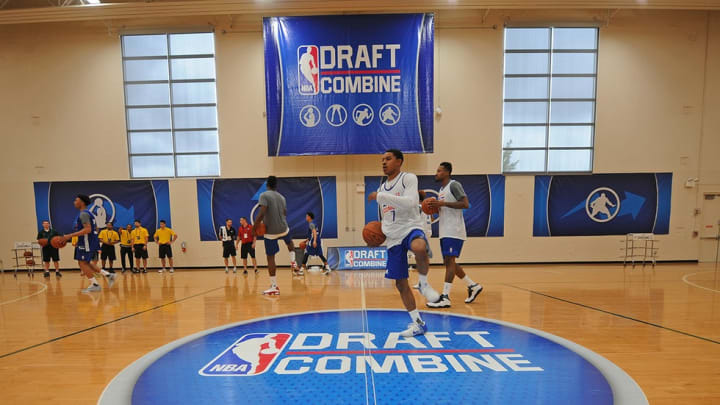Three ways the NCAA could improve the NBA draft evaluation process for college prospects

[video: 13724892]
Welcome to May Madness.
It is a new and unsettling day in college basketball, but for all the chaos we've witnessed since the season ended, a natural order is taking hold. A whopping 117 underclassmen initially entered the NBA draft—which is a lot, considering there will only be 60 selections made on draft night—but in recent weeks many have been steadily making their way back to school. The madness might be dizzying for fans and upsetting for coaches, but it was not nearly as disruptive as many feared.
The seeds for tumult were sown in January, when the NCAA passed a rule allowing underclassmen to remain in the NBA draft until 10 days pass following the league's predraft combine in Chicago, which ended on May 15. That was a drastic change from the previous setup, which forced players to make their final decisions in mid-April, some two weeks before the NBA's own deadline. That system was put in place by coaches—specifically, ACC coaches—who were more interested in protecting their own interests than enabling their players to make informed, life-changing decisions.
It was no surprise that lots and lots of youngsters would test the draft waters thanks to the new setup. It was also no surprise that many returned after learning they weren't good enough. Only about 70 players in all, including seniors and international prospects, were invited to the combine, so the ones that weren't had an easy decision. During the next week or so, more players will work out for NBA teams and have the chance to get direct feedback from scouts and general managers. Many of those will return to school as well, a little wiser, a little humbler, and hopefully a little more determined. The ones who remain in the draft were likely to leave college anyway.
It seems pretty clear that the new rule has pushed the game in a healthy direction. But I'd like to see the NCAA go further, and my argument is premised on a simple truth: The best way to learn is through experience. The more experience a young player has, the more information he acquires, the more likely he is to make sound decisions about his future. Here are three ways in which the NCAA should continue to push this envelope:
1. Extend the withdrawal deadline until after the draft.
I have never understood why college coaches want to make it harder for their best players to return to school. The deadline should be moved until after the draft so that players who weren't selected can come back to college, provided they are still in good academic standing. Yes, this would prolong the coaches' uncertainty, but that is a small price to pay for the chance to bolster their rosters. If that means a coach has to gamble and not fill all 13 available scholarships, then that is a calculation he must make. Most schools don't fill all those scholarships anyway.
• MORE: Lessons learned at the NBA combine
2. Open up competition opportunities in the summertime.
Right now, college athletes are forbidden from playing in any type of formal, organized setting in the off-season. Again, this strikes me as counterproductive. They are going to be playing all summer anyway. Most of the time, those workouts take place in low-intensity, low-structure settings against mediocre competition. Why not let them go up against some borderline pro prospects, guys who have been grinding their way through the D-League in obscurity? Let them see how good you really have to be to make it to the NBA.
Furthermore, I see no harm in letting college players receive a small fee for playing in a pro-am league, or perhaps in an exhibition that includes professionals. The NCAA can cap the amount at, say, $500 a game. At the very least, the teams should be able to cover the players' travel, lodging and food expenses. Think of it as a summer internship. The entire rules structure of the NCAA is based on preventing athletes from getting special treatment that is not available to regular students, but this is one area in which athletes are the underprivileged ones. If regular college students are permitted to do internships in their off-seasons, then athletes should have the same opportunity.
3. Allow for some formal interaction with agents.
I realize this is a dicey proposition, but to me it's like gambling. We know it's going on, so why not bring it out into the open where it can be regulated and monitored?
Young players and their families need to learn about the business of basketball. The more agents they know, the more they see how these guys operate, the less likely they are to get taken advantage of down the road. As long as everything is above board, with no money changing hands and no promises made regarding future representation, then we should be open to ways in which young people can interact with, and receive advice from, NBA agents. It would be an important part of their education.
Look, change is hard, and instability is harder. My suggestions will add to both. But they are still worth implementing. The world works better when people have good, fair, accurate information. The purpose of college is for young people to learn, and experience is the most effective (and often the most humbling) teacher.
The bottom line is, college basketball needs as many good players as it can get. We need fewer rules written to prevent players from leaving, and more that will help them find a way to come back.
